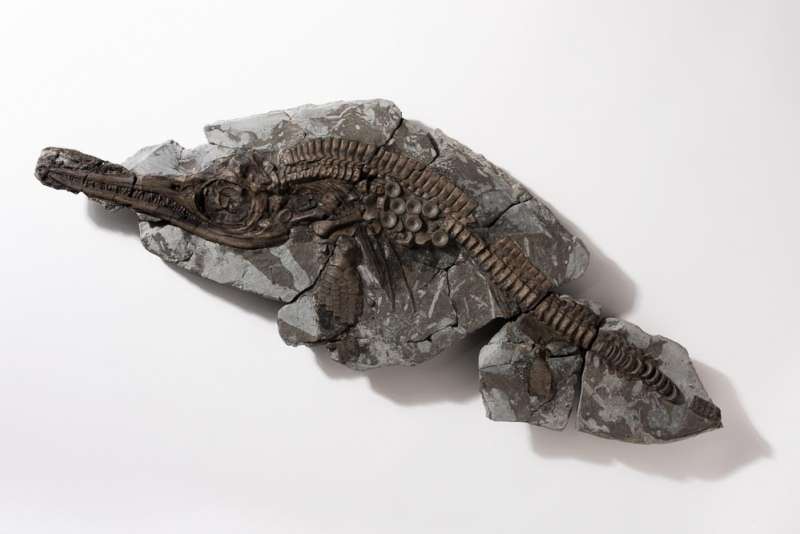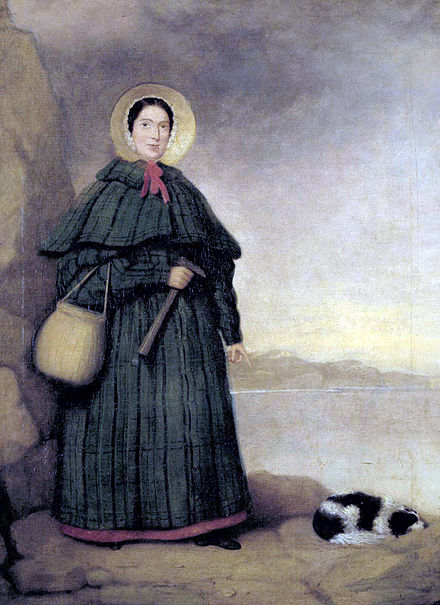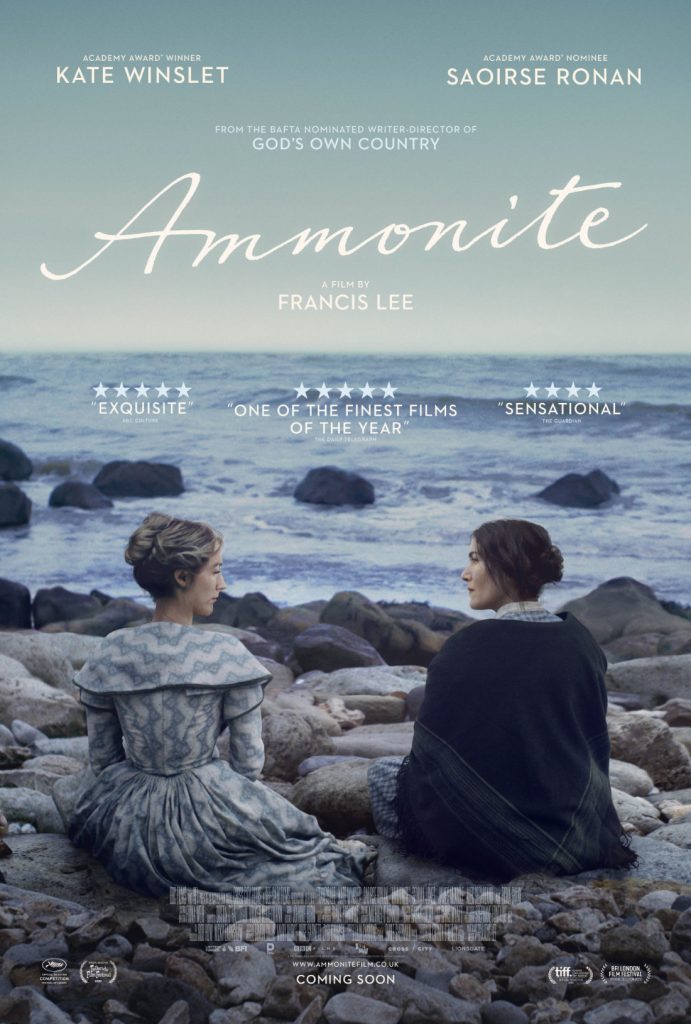
Sometime between 1809 and 1811, along a stretch of what is now known as the Jurassic Coast, a young girl discovers, along with her brother and father, a strange-looking fossilised skull of about 5 metres in length. The father, Richard, is a cabinetmaker by trade who harbours a passion for collecting fossils; his daughter, Mary – just a child of about 10 or 12 at the time – shares his interest in the developing field of geology and often accompanies her father as his fossil-collecting sidekick. Like her father, she has little formal education – her interest and knowledge of the subject instead originating from the research she undertakes independently into the natural sciences. Over the course of many days, they work to unearth the remains of the peculiar creature that they have found. It is a species unknown to the scientific community in England at the time, appearing on first glance to resemble a kind of primordial crocodile; it is later determined to be a 201-million-year-old marine reptile called the Ichthyosaurus (or ‘fish lizard’). This is not the only discovery that the young girl, Mary, will make over the course of her life, or even her most significant contribution to the field of palaeontology. Although often side-lined by the scientific community due to her gender and class, this young girl would latterly become one of the “greatest fossilists the world ever knew”: Mary Anning (1799-1847).

Her life and work might have become more familiar to many within the last year thanks to her recent portrayal in the 2020 film, Ammonite, by Kate Winslet. Much like 2021’s The Dig (a film which covers the discovery of the Sutton Hoo collection), Ammonite attempts to rehabilitate Mary Anning’s scientific reputation from relative obscurity – Illuminating the oft-erased, yet vitally important work undertaken by figures whose personal circumstances frequently relegates them to the footnotes of history. Ammonite, however, goes beyond that: it both showcases Anning’s scientific aptitude and charters her developing, romantic relationship with a young woman called Charlotte Murchison.
Within the film itself, these two strands often work in tandem: the process of physically digging up silt and dirt for these fossilised remains ultimately parallels Mary and Charlotte’s attempts to interrogate their own sexual desire; the unearthing of the literal ammonite precipitating the more metaphoric discovery of their love for one another. Geology and palaeontology, in other words, becomes a metaphor for their queerness. In much the same way that contemporary interest in fossil-hunting was largely motivated by a desire to learn about the origins of life on earth, geology becomes a vehicle of self-discovery and revelation for these two women. Queer love, the film proposes, is as ancient and worthy of excavation – or engagement and memorialisation – as the fossils that Mary discovers.

Responses to the film by those who claim descent from Mary Anning herself express interesting reservations about the historical accuracy of this queerness. For all that Mary’s work has undoubtedly revolutionised our understanding of prehistoric life on earth, the details of her life remain largely unknown. Although Mary neither married nor had children, critics maintain that the film’s portrayal of her queerness is unsubstantiated and often point to how the exact nature of Charlotte and Mary’s relationship remains speculative. In a national newspaper, Barbara Anning expressed her reservations about the film’s attempts to queer the past:
“I do not believe that there is any evidence to back up portraying her as a gay woman. Do the filmmakers have to resort to using unconfirmed aspects to somebody’s sexuality to make an already remarkable story sensational? This adds nothing to her story.”
Queerness, in other words, becomes an anachronism and an apparent facet of the film’s wider campaign to mould history according to its creators’ beliefs. The film director, Francis Lee, highlights within his response the limits of adopting a historical outlook which views heterosexuality as a consistent default:
“After seeing queer history be routinely ‘straightened’ throughout culture, and given a historical figure where there is no evidence whatsoever of a heterosexual relationship, is it not permissible to view that person within another context?”
Why is it, Lee asks, that we view absence of evidence for any sexuality as confirmation of Mary Anning’s heterosexuality? Why is heterosexuality seen as a historical truth – one which is almost impervious to doubt or reassessment- whilst queerness is viewed as anachronistic, something which is merely supplied in order to add extra entertainment value?
Ironically, criticism of the film’s perceived inaccuracy fails to recognise how this self-same capacity to imagine an infinite number of possible natures and lives is a fundamental aspect of palaeontology, and one that Mary herself had to exercise. The fossils that Mary discovered over the course of her life lay physically and metaphorically beneath the surface; they needed to be literally dug up and examined in order to be understood. The secrets and information they contained- the lives that they testified to- relied on the burden of that evidence. At a time before Darwin’s theory of evolution, such ideas about the origin of life were still heavily informed by church doctrine. Much like those who criticise Ammonite’s portrayal of Mary Anning’s sexuality, absence of evidence for life that preceded humans was seen as sufficient validation for this belief system.
In light of how queer lives are often buried or erased over the course of history, and the need to often express queer love via coded, subliminal means, we can perhaps discern a comparable impulse between the processes of queering the past and paleontological research. In both, we must think beyond conventional ideas about the past and open our minds to what lies hidden beneath the surface. To queer the past is not to compromise its veracity, but to recognise that the past is a shifting, dynamic variable which can continue to yield revelations and thereby influence the present. In much the same way that Mary Anning’s contribution to palaeontology and geology has been downplayed due to the prejudices of the contemporary scientific community, queer history can be seen more as a relegated presence than an absent one. Indeed, by attempting to metaphorically unearth queer voices, do we not resemble palaeontologists like Mary Anning, as we mine beneath the silt of history for kernels of past life that have long been erased?
